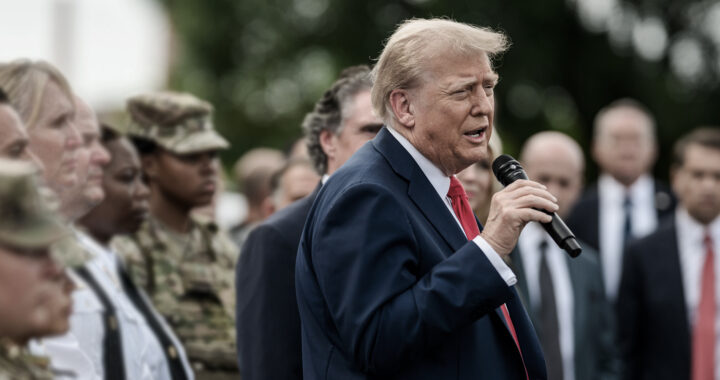Presidential approval ratings in the United States have long served as a critical measure of public confidence in national leadership. These figures often reveal more than short-term popularity because they offer insight into political strength, policy reception, and the potential direction of a presidency within the larger historical and electoral landscape. Recent polls following the first 100 days of Donald Trump indicate he is now the most hated U.S. president at first-year mark in the entire U.S. history.
Donald Trump Faces Historic Polling Lows in the First Year of His Second Term Amid Growing Public Discontent
Low Ratings and Sources of Dissatisfaction
• First 100-Day Approval Rating: Data from the Washington Post and ABC News Poll showed that only 39 percent of Americans were satisfied with the first 100-day performance of Trump. 55 percent disapproved. 44 percent of those who disapproved indicated strong disapproval. This illustrates the depth of negative public sentiment.
• Second Quarter Approval Numbers: A poll from Numbers and Verasight showed that Trump held a negative 15 approval rating based on the first seven months of his second term. Overall support was only at 41 percent nationwide. A second-quarter Gallup poll also showed a 37 percent approval rating. This is the lowest rating for his second term.
The lower approval rating comes from dissatisfaction in other facets of American life. Data from the Washington Post and ABC News poll further revealed that almost 50 percent of U.S. adults think that the second Trump administration had made wrong economic decisions in its first 100 days. The same poll also showed only 36 percent supported the contentious policy and actions on tariffs, and 56 percent indicated their strong disapproval.
Data from second-quarter polls further indicated how Americans perceive their financial and economic standing. The Numbers and Verasight poll revealed that a staggering 50 percent of Americans think that the policies of the second Trump administration made them worse off. 54 percent also said that tariffs are not worth pursuing, even if career opportunities in manufacturing will come back because of their impact on prices and overall cost of living.
Americans are stressed. A July 2025 poll by The Associated Press-NORC indicated that food and grocery expenses were a major source of stress for 53 percent of U.S. adults. About 50 percent also consider housing expenses, including rent and mortgage, as major stressors. Income or savings are also significant stress points for 43 percent of Americans. Even moderate-income households are anxious about their income and financial security.
Public opinion on crime briefly improved during the summer months, but fell back to a negative margin of 13 points in August based on the Numbers and Verasight poll. This reflects instability in public confidence in law and order. The same poll also showed sentiments on the ongoing immigration issue. 60 percent of Americans prefer providing undocumented immigrants with a clearer path to legal status over intense crackdowns and mass deportations.
Stacking Up Against Previous Presidents
The approval rating of Trump during his first 100 days is historically unprecedented. Barack Obama enjoyed 69 percent approval, George W. Bush maintained 63 percent, and Ronald Reagan stood at 18 percent. Even presidents burdened with controversies, including Richard Nixon and Harry Truman, began their terms with stronger levels of national support. The first 100 days of a newly elected U.S. president are often considered the honeymoon period.
Moreover, based on the numbers of previous U.S. presidents, the comparison underscores a unique reversal of political norms. Instead of beginning with goodwill and gradually declining, Trump entered his second term with approval levels typically associated with scandal or crisis. This unprecedented weakness could restrict his capacity to advance policies, negotiate foreign policy and international agreements, and maintain enduring domestic credibility.
It is worth mentioning that presidents historically relied on early popularity to secure legislative victories, establish alliances, and build momentum. The early weaknesses in the approval rating and reception of Trump undermine these traditional advantages, leaving him vulnerable to political opposition and market skepticism. The erosion of public trust threatens both the functionality of his administration and the durability of American democratic institutions.
Trump has been responding to his historically low approval ratings through continuous posturing of strength and power. These include immigration enforcement, tariff expansion, and attempts to dip into geopolitical issues like the Israel-Iran conflict and the ongoing Russia-Ukraine war. He has also encouraged allies to redraw political maps through gerrymandering and has flexed his authority against Democrat-led states through threats and even militarization.
FURTHER READINGS AND REFERENCES
- Balz, D., Clement, S., and Guskin, E. 27 April 2025. “Trump Approval Sinks as Americans Criticize His Major Policies.” The Washington Post. Available online
- Brenan, M. 24 July 2025. “Independents Drive Trump’s Approval to 37% Second-Term Low.” Gallup. Available online
- Lewis, M. 22 August 2025. “Gallup Poll: Trump’s Q2 2025 Approval Falls Near Record Low.” Konsyse. Available online
- Lewis, N. 5 August 2025. “Food, Housing, and Health Care Costs Create Widespread Stress Among Americans.” Konsyse. Available online
- Morris, G. E. 26 August 2025. “Democrats Lead the U.S. House Generic Ballot By 8; Voters Back Fair Maps and Oppose Trump’s Tariffs.” Strength in Numbers. Available online
